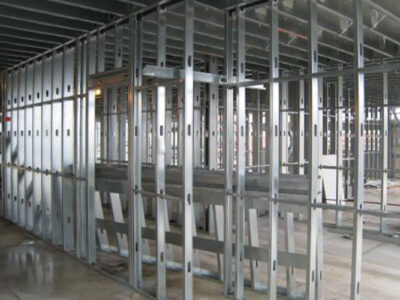
Insulating your office ceiling is crucial when creating a comfortable and energy-efficient workspace. Proper insulation regulates indoor temperature, helps reduce energy consumption, and minimises sound transmission. With various materials available, selecting the right one for your office ceiling can be challenging. In this post, we will explore different types of materials that you can use to insulate your office ceiling, each offering unique benefits.
Fibreglass Insulation
Fibreglass insulation is a popular choice for insulating office ceilings due to its cost-effectiveness and thermal efficiency. It consists of finely woven glass fibres that trap air pockets, slowing heat transfer. Fibreglass insulation is available in batts (pre-cut sections) or rolls, making installation relatively straightforward. This material also provides decent sound insulation, reducing noise from adjacent rooms or floors. However, proper protective gear is necessary during installation as the glass fibres can irritate the skin and lungs.
Mineral Wool Insulation
Mineral wool, also known as rock wool or stone wool, is made from natural minerals like basalt or slag. It is renowned for its excellent fire resistance and sound absorption properties. Mineral wool insulation is available in batts or loose-fill forms, making it suitable for various ceiling types. Due to its ability to withstand high temperatures, it is particularly useful in commercial settings where fire safety is a concern. Mineral wool is one of the most common forms of ceiling insulation, and it is cost-effective and simple to install.
Cellulose Insulation
Cellulose insulation is an eco-friendly option made from recycled paper, treated as fire- and pest-resistant. It can be blown into place as loose-fill insulation, effectively filling nooks and crannies for optimal thermal performance. Cellulose insulation is also a great choice for retrofitting office ceilings, as you can easily install it without major disruptions. Its excellent soundproofing capabilities make it a desirable option for open office environments where noise reduction is essential.
Foam Board Insulation
Foam board or rigid foam insulation offers high insulation value and moisture resistance. It comes in various materials, such as expanded polystyrene (EPS), extruded polystyrene (XPS), and polyisocyanurate (PIR). Foam boards are typically used in commercial spaces where there’s a need for a high R-value with minimal thickness. You can easily cut the boards and fit them between ceiling joists, providing a barrier against heat transfer and condensation.
Spray Foam Insulation
Spray foam insulation is a versatile option that creates an airtight seal, effectively preventing heat loss and air infiltration. It expands upon application, filling gaps and crevices in the ceiling structure. Closed-cell spray foam insulation offers a high R-value and moisture resistance, making it suitable for areas prone to dampness. While it provides excellent thermal and sound insulation, professional installation is recommended due to the intricacies of the application process.
Reflective Foil Insulation
Reflective foil or radiant barrier insulation works by reflecting heat away from the ceiling. It consists of a layer of reflective foil attached to a substrate. This type of insulation is particularly effective in hot climates, as it helps to keep the indoor temperature cooler by reflecting radiant heat. Reflective foil insulation is usually installed with an air gap to maximise efficiency.










